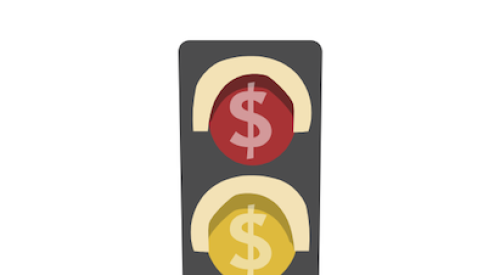Following our previous discussion on creating a take-charge culture, the next action is to focus on increasing sales revenue while reducing unnecessary costs. The most-critical mission in this area is raising the sales conversion ratio in your organization.
I see a lot of confusion, misplaced activities, and wasted money in the sales process. For instance, far too many salespeople have bought into the hype that social networking is the be-all end-all of what to do to make sales. Indeed, social media has its place, but only as part of a well-conceived, well-executed sales-generation strategy. Think about this: Spending money and time to deliver traffic to a salesperson who cannot adequately demonstrate and consistently implement a well-planned, congruent sales presentation (to include effective follow through) is only wasting money and giving them more chances to fail.
Some sales managers not only condone but promote extraordinary amounts of time being involved in the panacea of social media, to the exclusion of the appropriate amount of diligent work, practice, and accountability to fundamental sales activities. Perhaps it’s because computer-related work is fun, or as I have heard it said, “It’s inside work with no heavy lifting.”
There are several fundamental activities that all new-home salespeople should be engaged in to make sales. These include prospecting and self-generation of potential customers and proper appearance, attitude, communication style, and sales skills when face to face with someone who has contacted the sales office via phone, Web, e-mail, or in person. In your organization, how much time, focus, accountability, and resources are being directed to assure optimum performance with all of the contacts a salesperson has with all potential customers?
RELATED
- 10 Traits of a New-Home Sales Superstar
- 25 Proven Ways Home Builders Can Increase Sales
- New Benchmarks for Measuring Online Sales
10 Performance Measurements to Apply to Your Sales Operation
By tracking each salesperson’s performance against these standards you will be able to determine who your top producers are, who is improving, and who isn’t pulling their weight. Use these like an Indy car driver uses gauges — look at them regularly and make swift adjustments when required.
The ability to:
1. Demonstrate conscious competence through simulated selling (role play) the required skills in all aspects of customer interaction
2. Demonstrate unconscious competence through a mystery video shop
Measure and improve:
3. Cost of traffic.Divide all the money you spend on marketing programs, advertising, billboards, agency fees, etc., by the number of potential customers who actually show up to determine an average cost per traffic unit. .
4. Conversion ratio.The number of closed sales by salesperson compared to the number of potential customers with whom contact has been made. This is the true measure of how well a salesperson is performing and how their time is being spent.
5. Cancellation rate.Learn why cancellations occurred.
6. Cancellation recovery rate.Track how many cancellations you recover over time. The least expensive person to do business with is the one with whom you’ve done business with before, so go after cancellations.
7. Realtor cooperation rate.One of the highest probabilities for a high conversion rate is when someone comes in with a Realtor.
8. Actual sales price as a percentage of the listed price.Every dime that is given away due to poor presentation or negotiating skills comes directly from your bottom line. That old joke about losing money on every sale but making it up on volume is just that — a bad joke.
9. Referral rate.What percentage of your buyers is willing to refer your company and what percentage of your sales actually comes from referrals? If you have a high willingness-to-refer rate but a low referral rate, you aren’t doing a good enough job of asking for referrals.
10. Net profit.The bottom line: Are you getting the kind of returns that you deserve?












